Experimental and Numerical Analysis of the Progressive Damage and Failure of SiCf/TC4 Composite Shafts
Abstract
:1. Introduction
2. Theoretical Modelling
2.1. Periodic Boundary Conditions
2.2. Derivation of the Damage Evolution States
3. Experiment
3.1. Experimental Materials
3.2. Experimental Results
3.2.1. [45°]6 Shaft Failure Mode Analysis
3.2.2. [45°]10 Shaft Failure Mode Analysis
4. Numerical Simulation Analysis Methods and Models
4.1. Definition of Plane Stress
4.2. Numerical Calculation Model
5. Results and Discussion
5.1. [45°]6 Model Calculation Results and Validation
5.1.1. Interface Damage
5.1.2. Matrix Damage
5.1.3. Fibre Damage
5.2. [45°]10 Model Calculation Results and Validation
5.2.1. Interface Damage
5.2.2. Matrix Damage
5.2.3. Fibre Damage
6. Conclusions
- (1)
- For the [45°]6 model, when the reverse torque increased, the interface was subjected to tensile load. The interface first cracked at −6552 Nm; it exhibited a large number of cracks after expansion to the matrix, resulting in the matrix stiffness reducing, followed by matrix failure. When the matrix failed, the protection of the fibres was lost; the fibres became destabilized, and, finally, fibre fracture occurred. Therefore, the interface failed under a small torque, and the matrix and fibre then failed sequentially, where interface cracking was the main form of failure. The final failure load was −11,812 Nm, and the entire damage process was a slow change process.
- (2)
- For the [45°]10 model, as the forward torque increased, the interface was subjected to compressive load. When the load reached 9108 Nm, the interface failed, instantly extending transversely to the matrix. Followed by the matrix failure, the failure of the interface and matrix occurred almost simultaneously, primarily owing to fibre fracture. The final failure load was 10,418, and the entire damage process was a fast change process.
- (3)
- The composite driving shaft is widely used in aero-engines; under positive torque, the torque magnitude must be relatively small, as operation is frequent. In contrast, under reverse torque, the torque magnitude can be considerably larger, as it is only experienced occasionally.
Author Contributions
Funding
Informed Consent Statement
Data Availability Statement
Conflicts of Interest
References
- Sha, Y.D.; Ding, G.Y.; Tian, J.G.; Luo, L.; Luan, X.C. Prediction of mechanical properties and experimental verification of fiber reinforced composites. J. Aerosp. Power 2018, 33, 2324–2332. [Google Scholar]
- Gu, C.; Feng, G.; Mi, G. Advances in the Welding of Aluminum Matrix Composites: A New Open Special Issue in Materials. Materials 2022, 15, 5335. [Google Scholar] [CrossRef] [PubMed]
- Talreja, R.; Singh, C.V. Damage and Failure of Composite Materials; Zhang, X.J., Li, H.Y., Shu, H.M., Eds.; National Defense Industry Press: Beijing, China, 2021. [Google Scholar]
- Chen, G.; Bezold, A.; Broeckmann, C. Influence of the size and boundary conditions on the predicted effective strengths of particulate reinforced metal matrix composites (PRMMCs). Compos. Struct. 2018, 189, 330–339. [Google Scholar] [CrossRef]
- Kim, D.Y.; Choi, H.J. Recent Developments towards Commercialization of Metal Matrix Composites. Materials 2020, 13, 2828. [Google Scholar] [CrossRef] [PubMed]
- Infante, V.; Freitas, M.; Fonte, M. Failure analysis of a crankshaft of a helicopter engine. Eng. Fail Anal. 2019, 100, 49–59. [Google Scholar] [CrossRef]
- Luo, L.; Sha, Y.D.; Hao, Y.P. Method of failure mode analysis and experimental verification for fiber reinforced composites turbo-shaft structure. J. Aerosp. Power 2020, 35, 1425–1436. [Google Scholar]
- Hooker, A.; Doorbar, P.J. Metal Matrix Composites for Aeroengines. J. Mater. Sci. Technol.-Lond. 2000, 16, 725–731. [Google Scholar] [CrossRef]
- Gallicchio, V.; Lodato, V.; De, S.R.; Rengo, S. Fracture Strength and Failure Modes of Endodontically Treated Premolars Restored with Compact and Hollow Composite Posts Subjected to Cyclic Fatigue. Materials 2022, 15, 1141. [Google Scholar] [CrossRef]
- Bartnicki, J.; Tomczak, J.; Pater, Z. Limits of the Process of Rotational Compression of Hollow Stepped Shafts. Materials 2019, 12, 3049. [Google Scholar] [CrossRef]
- Gupta, M. Metal Matrix Composites-The Way Forward. Appl. Sci. 2020, 10, 3000. [Google Scholar] [CrossRef]
- Samuel, D.S.; Howard, F.M.; Bert, J.S. Design and manufacture of a titanium matrix composite low pressure turbine shaft for turbo-shaft engines. Am. Helicopter Soc. Int. 58th Am. Helicopter Soc. Int. Annu. Forum 2002, 58, 549–553. [Google Scholar]
- Spring, S.; Kurz, W.; Krishnamurthy, K.; Peterson, M.; Merrick, H.; Ravenhall, R.; Smith, B. The Development of a Fiber-Reinforced Titanium Matrix Composite Low Pressure Turbine Shaft for Turboshaft Engines. Am. Helicopter Soc. Int. 59th Am. Helicopter Soc. Int. Annu. Forum 2003, 15, 1622–1626. [Google Scholar]
- Trifkovic, D.; Slobodan, N.S.; Srdjan, B.; Milos, M.; Branimir, K.; Zoran, R.; Momir, D. Failure analysis of the combat jet aircraft rudder shaft. Eng. Fail Anal. 2011, 18, 1998–2007. [Google Scholar] [CrossRef]
- Thoms, H.H.; Kraisorn, P.; Adib, A.B. Elasto-plastic finite element analysis of titanium metal matrix composite shafts under torsional loading. J. Strain Anal. Eng. 2014, 50, 199–216. [Google Scholar]
- Thomas, H.H.; Kraisorn, P.; Becker, A. Experimental failure investigation for a titanium metal matrix composite with +45° and ±45° fibre orientation. J. Mater. Sci. Des. Appl. 2015, 229, 51–63. [Google Scholar]
- Ostaszewska-Liżewska, A.; Nowicki, M.; Szewczyk, R.; Malinen, M.A. FEM-Based Optimization Method for Driving Frequency of Contactless Magnetoelastic Torque Sensors in Steel Shafts. Materials 2021, 14, 4996. [Google Scholar] [CrossRef]
- Hou, N.; Ding, N.; Qu, S.; Guo, W.M.; Liu, L.; Xu, N. Failure modes, mechanisms and causes of shafts in mechanical equipment. Eng. Fail Anal. 2022, 136, 106216. [Google Scholar] [CrossRef]
- Gu, J.; Li, K.; Su, L. A Continuum Damage Model for Intralaminar Progressive Failure Analysis of CFRP Laminates Based on the Modified Puck’s Theory. Materials 2019, 12, 3292. [Google Scholar] [CrossRef]
- Waqas, H.M.; Shi, D.; Tong, L.; Imran, M.; Qureshi, S.R. Conceptual Design of Composite Bridge Sandwich Structure. Appl. Sci. 2020, 11, 214. [Google Scholar] [CrossRef]
- Gao, G.; An, L.; Giannopoulos, I.K.; Han, N.; Ge, E.; Hu, G. Progressive Damage Numerical Modelling and Simulation of Aircraft Composite Bolted Joints Bearing Response. Materials 2020, 13, 5606. [Google Scholar] [CrossRef]
- Riccio, A.; Costanzo, C.D.; Gennaro, P.D.; Sellitto, A.; Raimondo, A. Intra-laminar progressive failure analysis of composite laminates with a large notch damage. J. Eng. Fail Anal. 2017, 73, 97–112. [Google Scholar] [CrossRef]
- Zhang, C.; Li, N.; Wang, W.Z.; Wieslaw, K.B.; Fang, H.B. Progressive damage simulation of triaxially braided composite using a 3D meso-scale finite element model. Compos. Struct. 2015, 125, 104–116. [Google Scholar] [CrossRef]
- Himayat, U.; Khurshid, A.; Muhammad, I.; Afzal, H.; Vadim, V.S. Simulation of buckling-driven progressive damage in composite wind turbine blade under extreme wind loads. J. Eng. Fail Anal. 2022, 140, 106574. [Google Scholar]
- Han, Z.; Wang, K.; Lu, L.; Wu, Y.S. Fatigue damage assessment method of turbine shafts’ torsional vibrations under SSO incidents. J. Eng. Fail Anal. 2019, 105, 627–637. [Google Scholar] [CrossRef]
- Jeng, S.M.; Yang, J.M.; Yang, C.J. Fracture mechanisms of fiber-reinforced titanium alloy matrix composites Part III: Toughening behavior. Mater. Sci. Eng. A 1991, 138, 181–190. [Google Scholar] [CrossRef]
- Yang, Q.; Xie, W.H.; Meng, S.H.; Du, S.Y.; Li, Y.X. Multi-scale analysis method of composite and damage simulation of typical component under tensile load. J. Acta Mater. Compos. Sin. 2015, 32, 617–624. [Google Scholar]
- Ren, X.; Li, J. Multi-scale based fracture and damage analysis of steel fiber reinforced concrete. J. Eng. Fail Anal. 2013, 35, 253–261. [Google Scholar] [CrossRef]
- Echaabi, J.; Trochu, F.; Gauvin, R. Review of failure criteria of fibrous composite materials. Polym. Compos. 1996, 17, 786–798. [Google Scholar] [CrossRef]
- Divse, V.; Marla, D.; Joshi, S.S. 3D progressive damage modeling of fiber reinforced plastics laminates including drilling-induced damage. Compos. Part A-Appl. Sci. Manuf. 2022, 163, 107230. [Google Scholar] [CrossRef]
- Liu, Y.S.; Chen, X.H.; Wu, Z.Y.; Shi, L.; Li, J.P. Effect of axial yarn distribution on the progressive damage behavior of braided composite tube subjected to three-point bending. Thin Wall Struct. 2022, 181, 110123. [Google Scholar] [CrossRef]
- Weibull, W.J. A Statistical Distribution Function of Wide Applicability. Appl. Mech. 1951, 18, 293. [Google Scholar] [CrossRef]
- Xu, K.; Wang, Y.M.; Xu, Z.; Yang, Q.; Zhang, G.X.; Yang, L.N.; Yang, R. Monitoring damage evolution in a titanium matrix composite shaft under torsion loading using acoustic emission. Acta Metall. Sin.-Engl. 2019, 32, 1244–1252. [Google Scholar]
- Sun, Q.P.; Asqardoust, S.; Sarmah, A.; Jain, M. Elastoplastic analysis of AA7075-O aluminum sheet by hybrid micro-scale representative volume element modeling with really-distributed particles and in-situ SEM experimental testing. J. Mater. Sci. Technol. 2022, 123, 201–221. [Google Scholar] [CrossRef]
- Tan, S.C. A progressive failure model for composite laminates containing openings. J. Compos. Mater. 2016, 25, 556–577. [Google Scholar] [CrossRef]

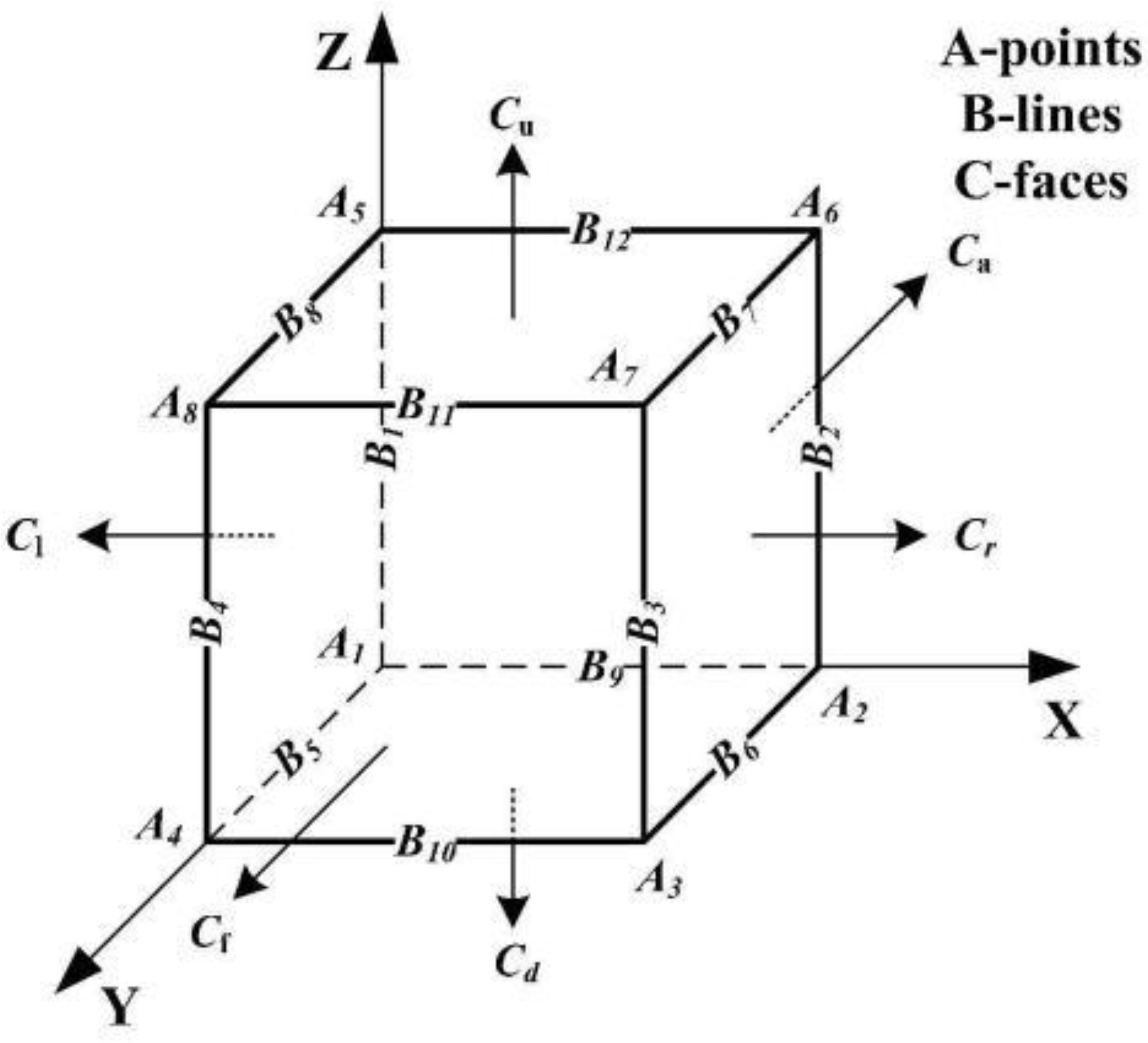
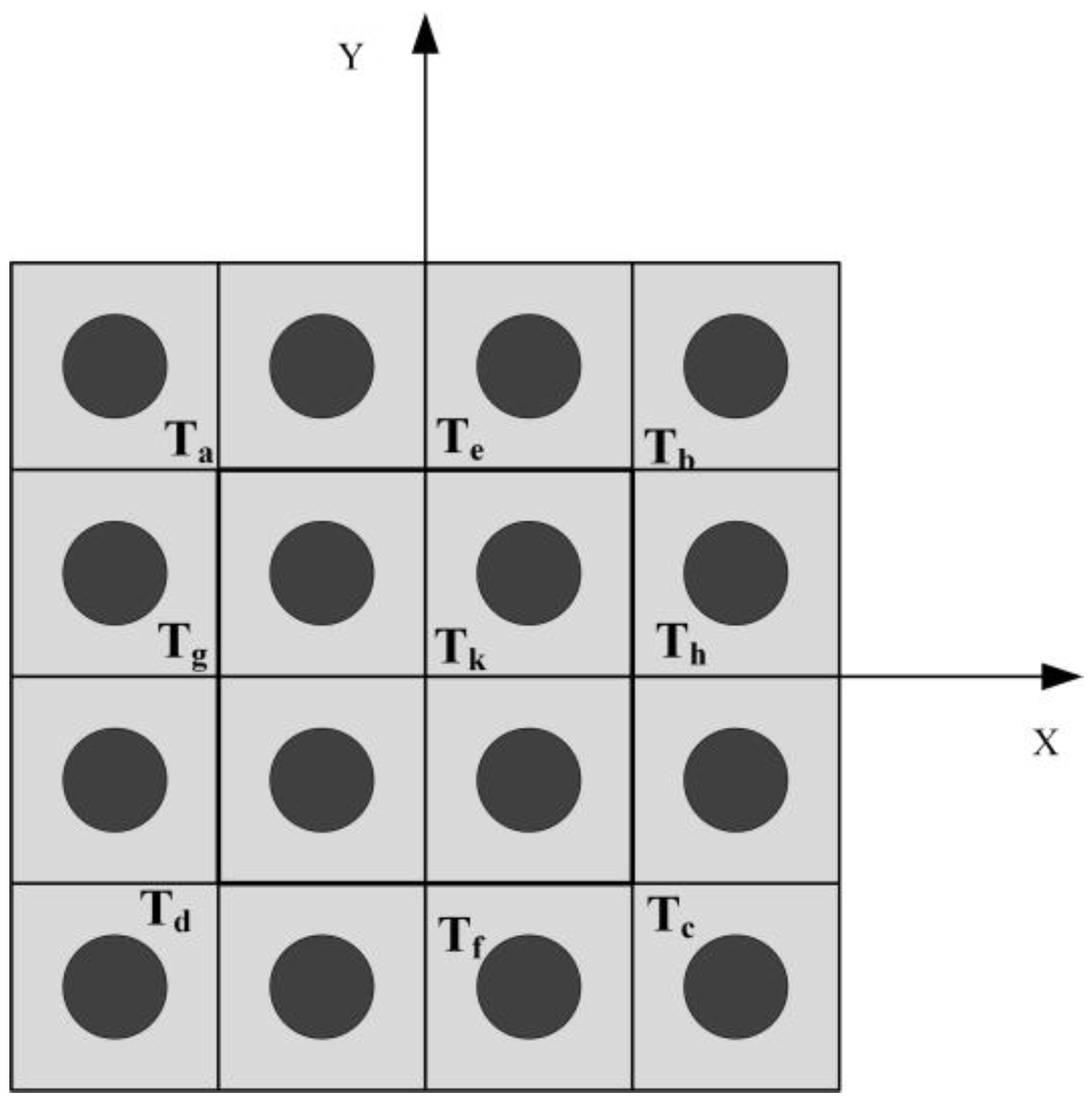

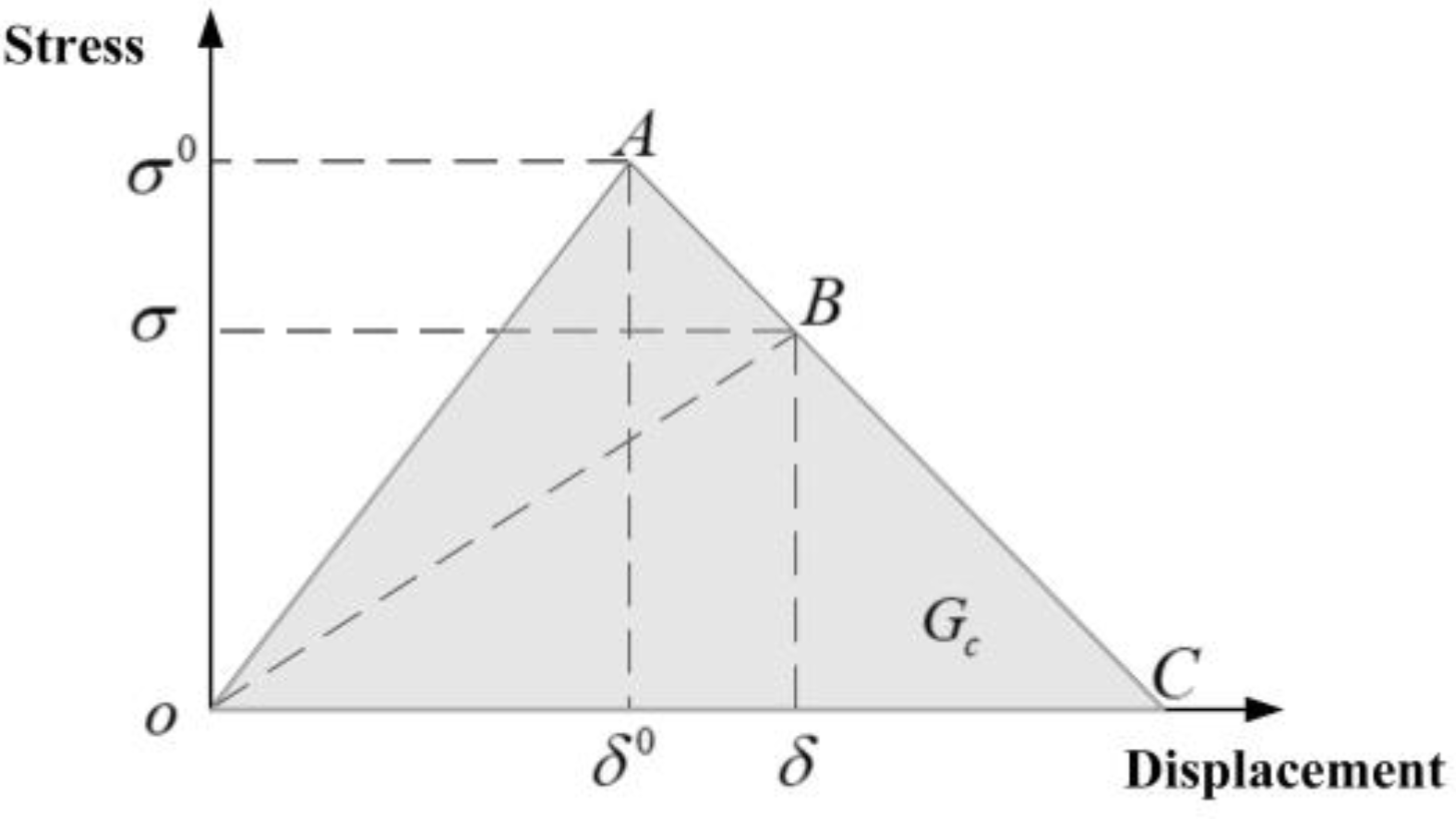
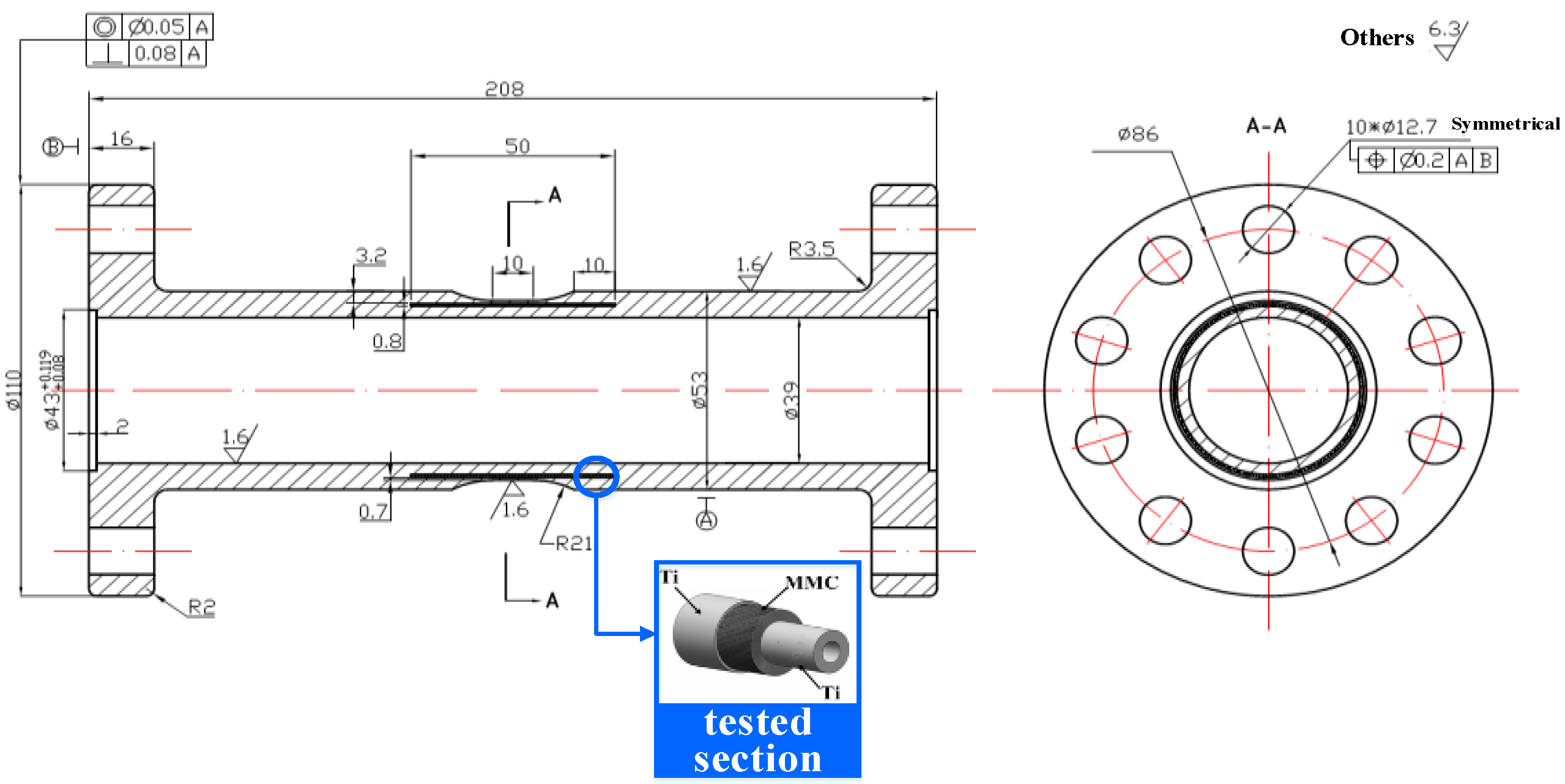

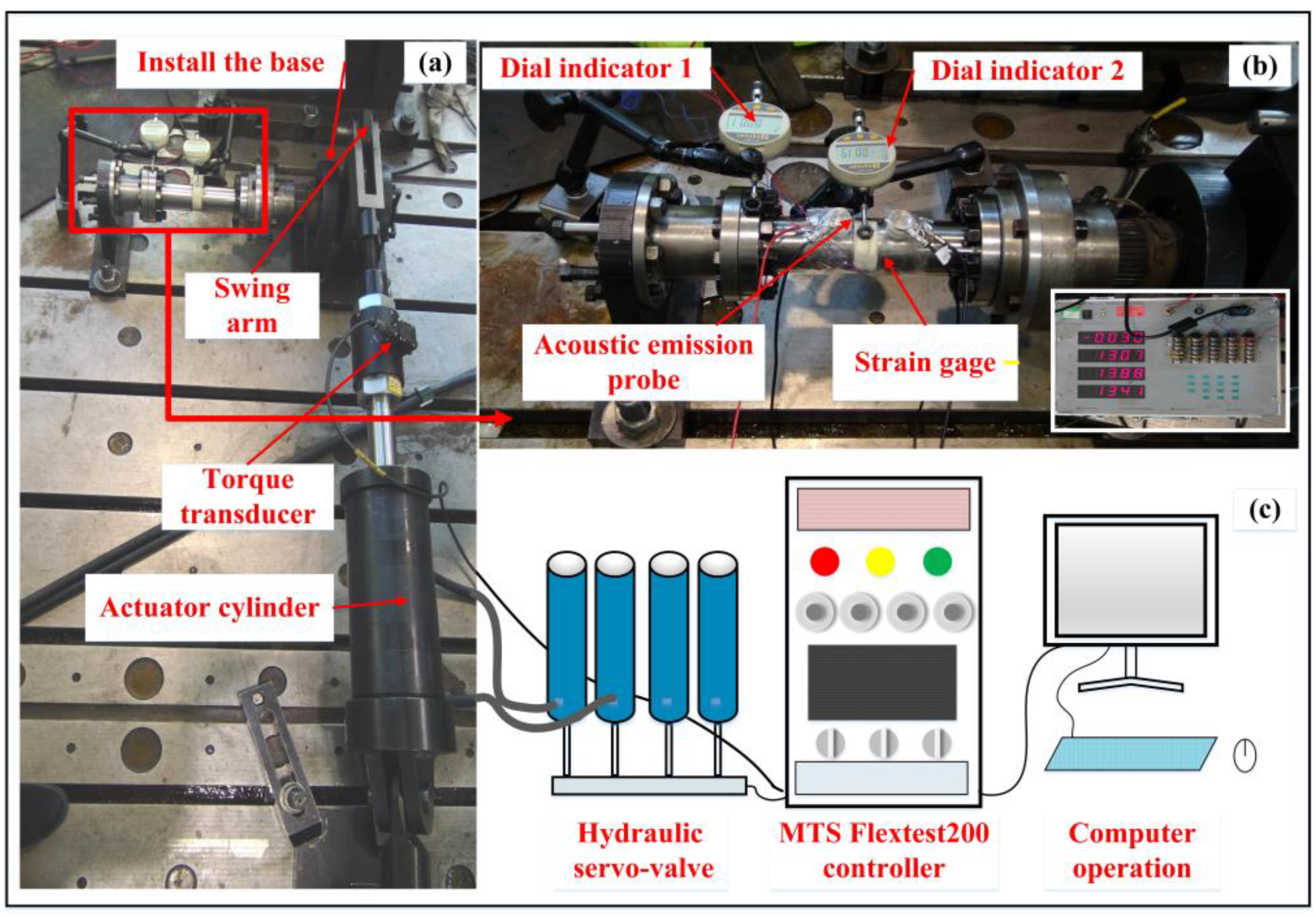
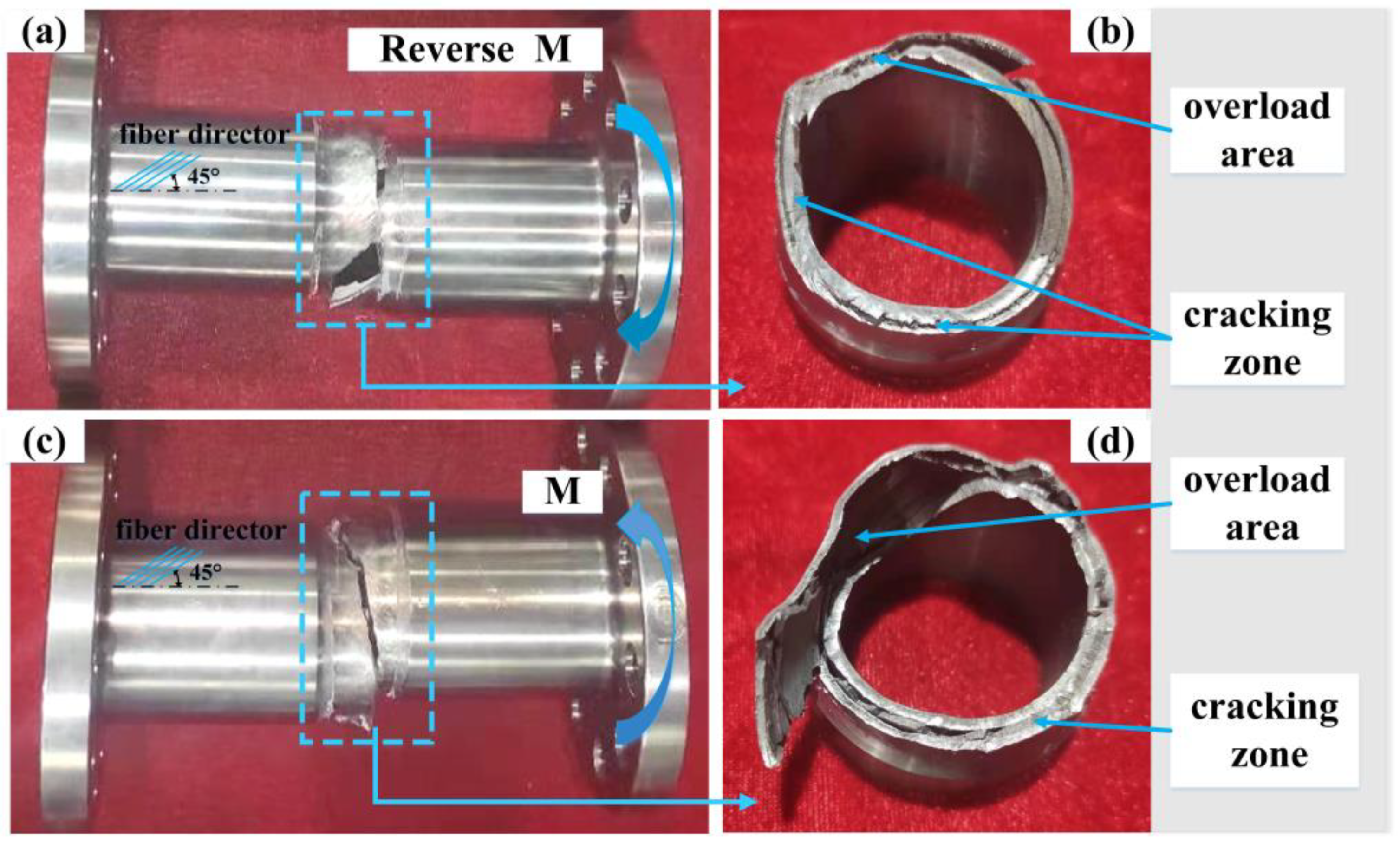
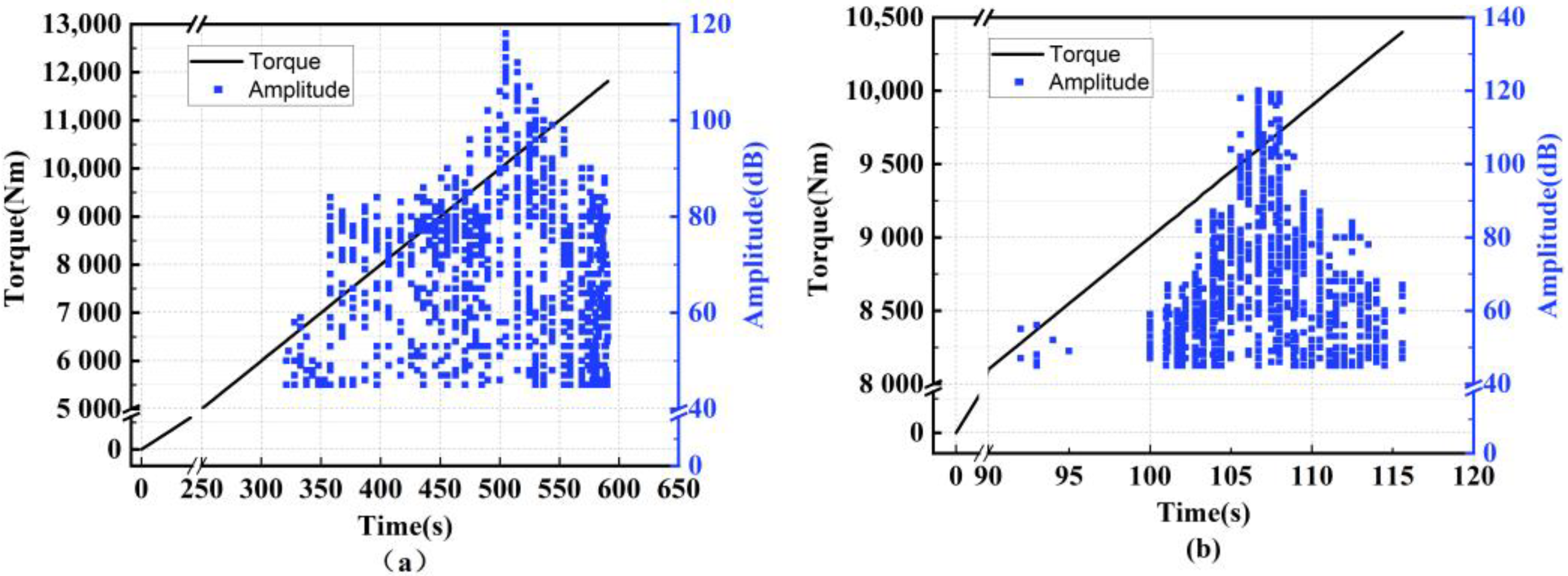


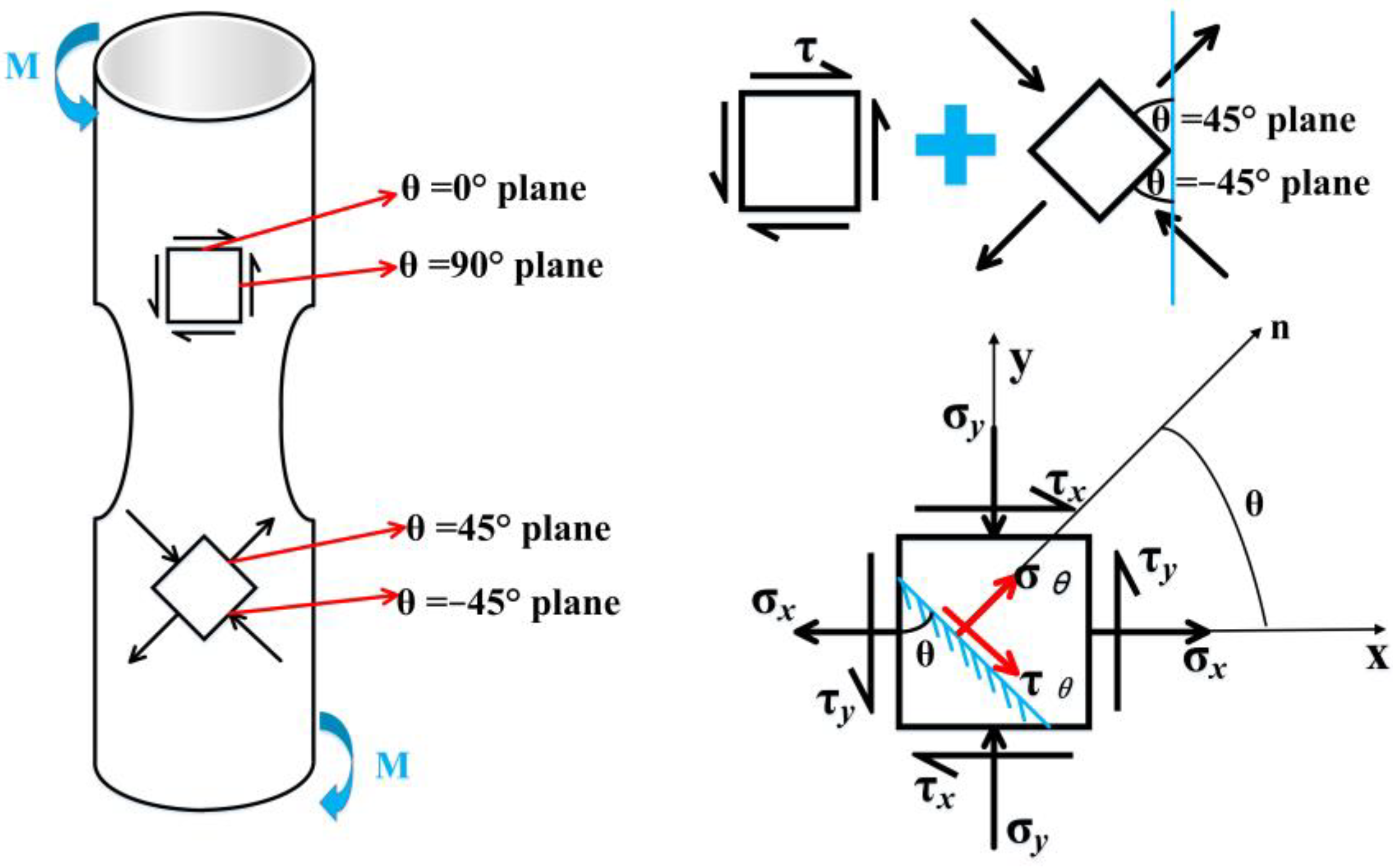
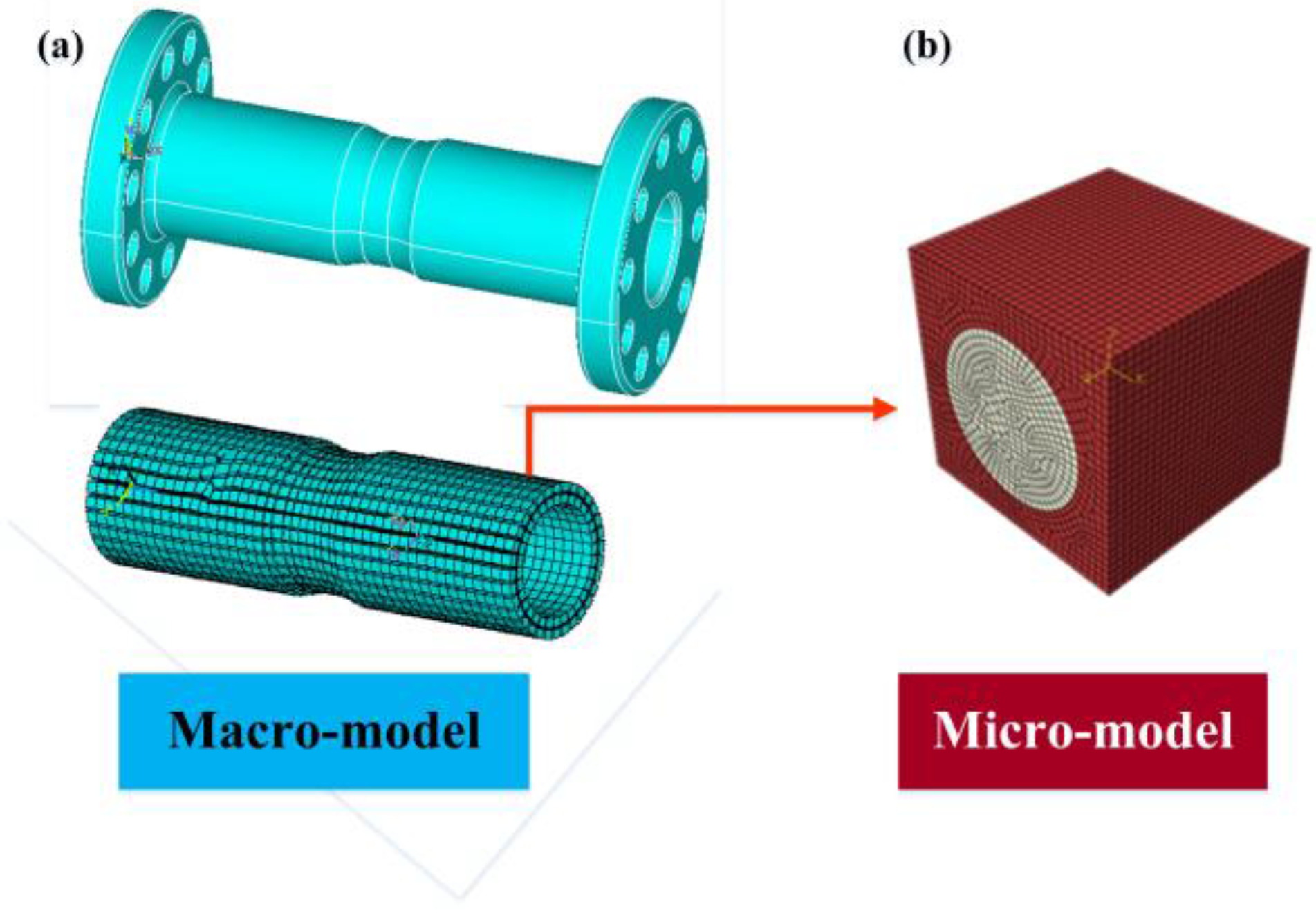
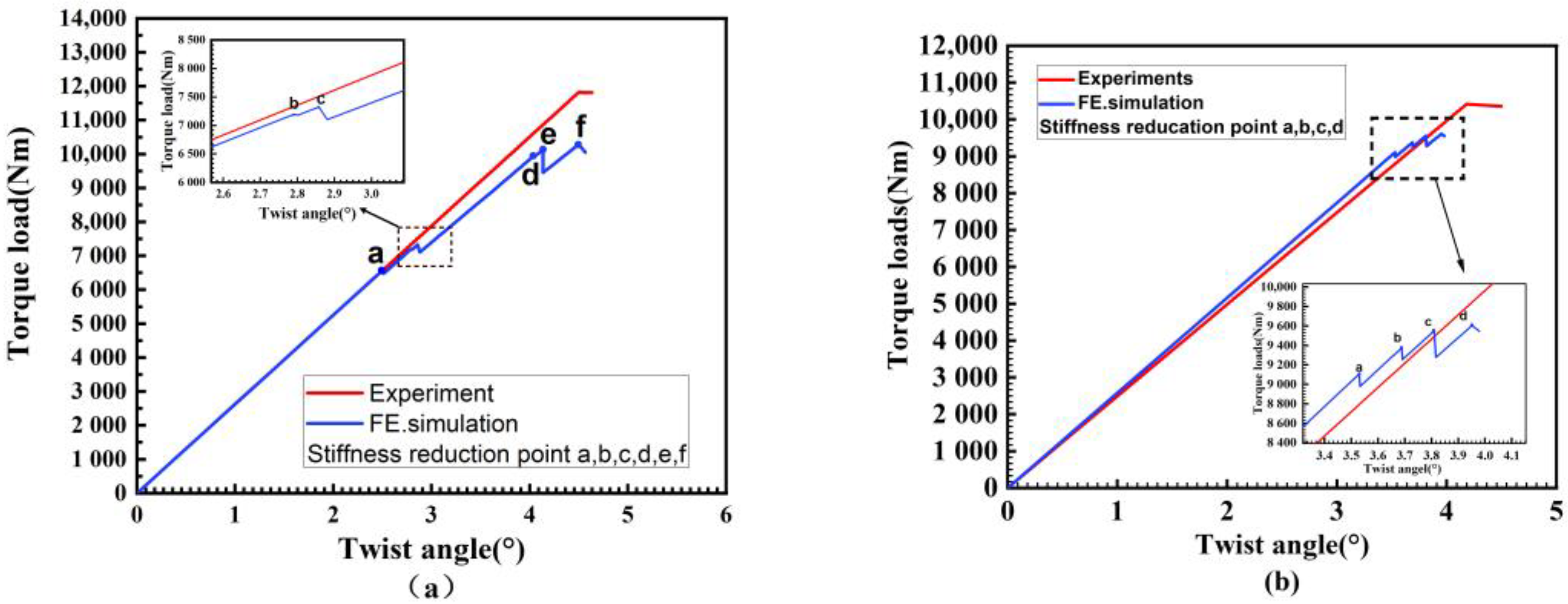
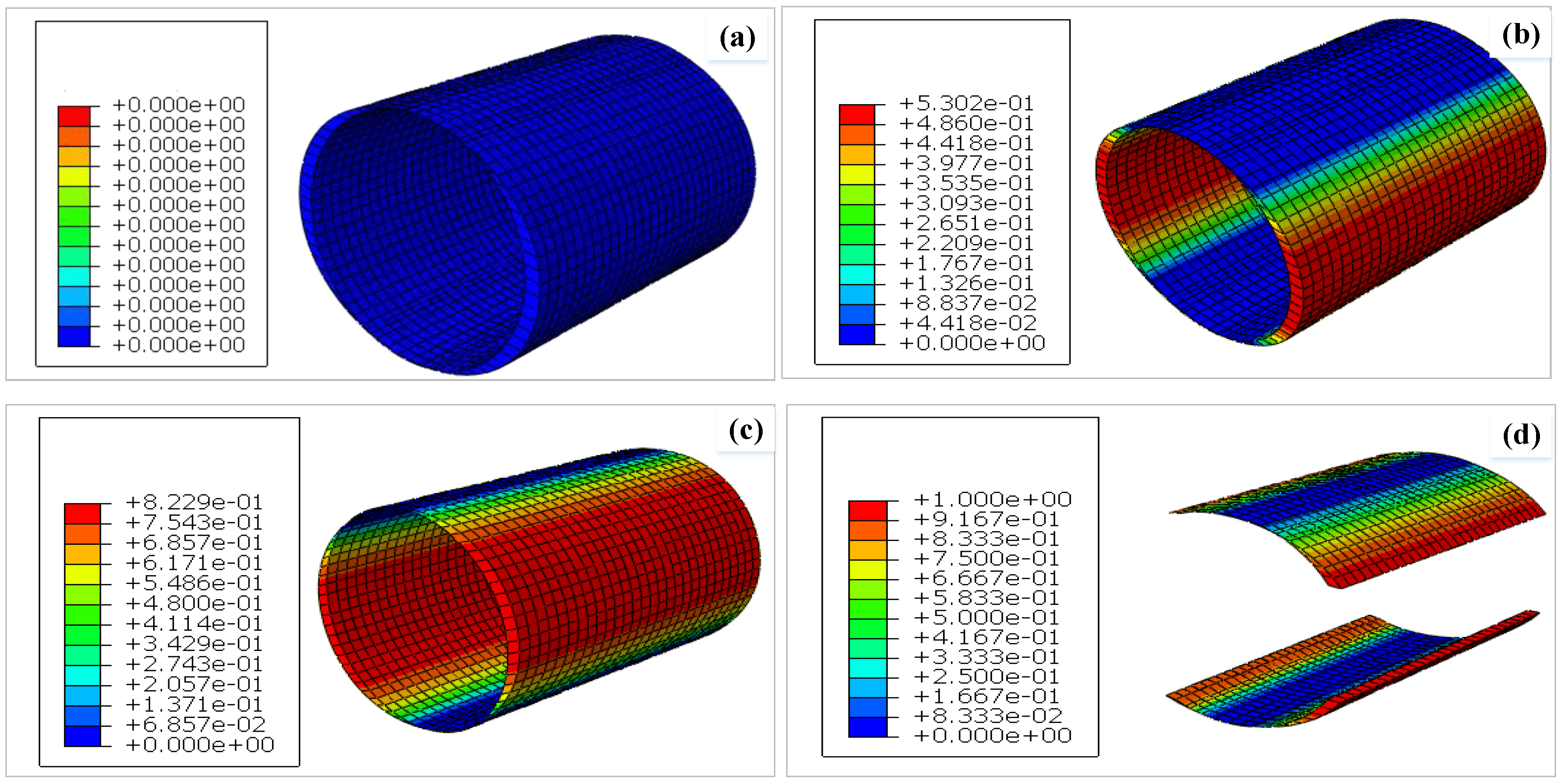







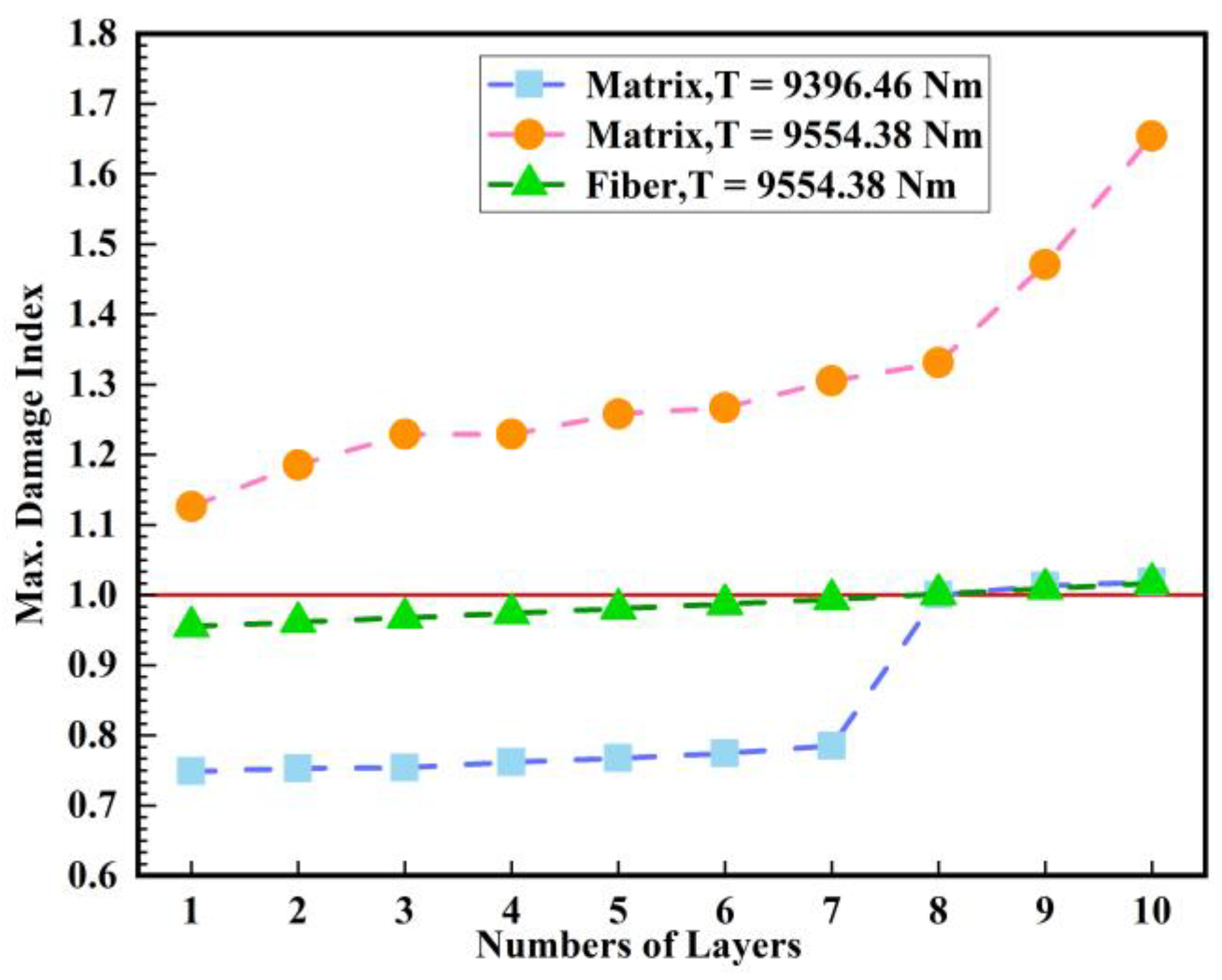
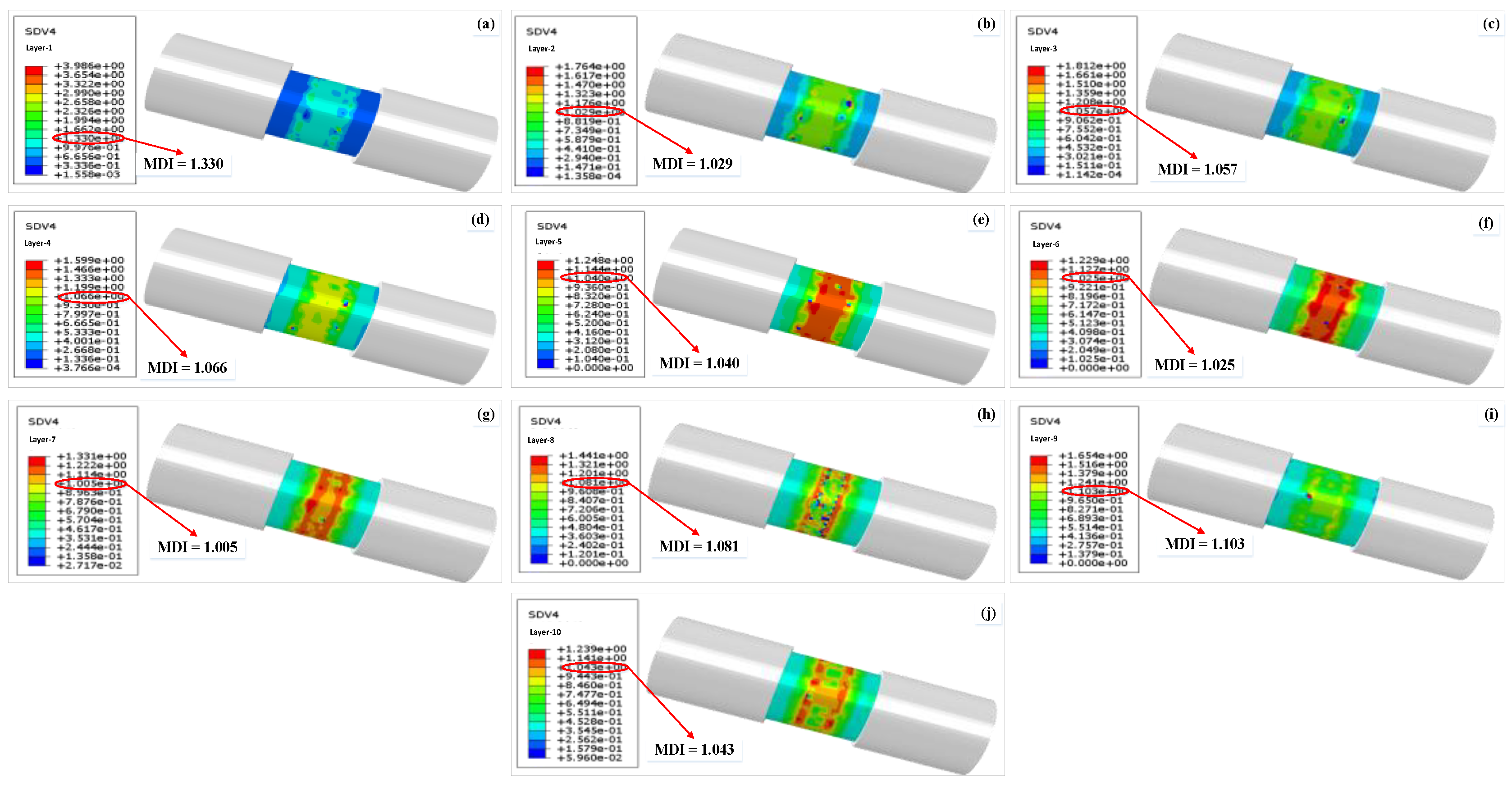

| Layer Scheme | Torque (M) Direction | Experiment Value/Nm | Fracture Status |
|---|---|---|---|
| [45°]6 | Reverse | −11,812 | Cracks in 45° and 90° directions |
| [45°]10 | Positive | 10,418 | Cracks in 90° direction |
| Material | E/GPa | G/GPa | |||||
|---|---|---|---|---|---|---|---|
| SiC/TC4 | E1 | 234 | 0.23 | G1 | 64.38 | ||
| E2 | 187 | 0.27 | G2 | 71.69 | |||
| E3 | 187 | 0.23 | G3 | 64.38 | |||
| Material | E/GPa | Xt/MPa | Xc/MPa | S/MPa | |||
| SiC | 400 | 0.17 | 1800 | 1800 | 900 | ||
| Ti | 110 | 0.30 | 950 | 1100 | 510 | ||
| Material | E/GPa | Xt/MPa | Xc/MPa | /mm | |||
| TiC | 330 | 0.3 | 98.5 | 98.5 | 0.0005 | ||
Disclaimer/Publisher’s Note: The statements, opinions and data contained in all publications are solely those of the individual author(s) and contributor(s) and not of MDPI and/or the editor(s). MDPI and/or the editor(s) disclaim responsibility for any injury to people or property resulting from any ideas, methods, instructions or products referred to in the content. |
© 2023 by the authors. Licensee MDPI, Basel, Switzerland. This article is an open access article distributed under the terms and conditions of the Creative Commons Attribution (CC BY) license (https://creativecommons.org/licenses/by/4.0/).
Share and Cite
Luo, L.; Wang, J.; Sha, Y.; Hao, Y.; Zhao, F. Experimental and Numerical Analysis of the Progressive Damage and Failure of SiCf/TC4 Composite Shafts. Appl. Sci. 2023, 13, 6232. https://doi.org/10.3390/app13106232
Luo L, Wang J, Sha Y, Hao Y, Zhao F. Experimental and Numerical Analysis of the Progressive Damage and Failure of SiCf/TC4 Composite Shafts. Applied Sciences. 2023; 13(10):6232. https://doi.org/10.3390/app13106232
Chicago/Turabian StyleLuo, Li, Jingxuan Wang, Yundong Sha, Yanping Hao, and Fengtong Zhao. 2023. "Experimental and Numerical Analysis of the Progressive Damage and Failure of SiCf/TC4 Composite Shafts" Applied Sciences 13, no. 10: 6232. https://doi.org/10.3390/app13106232
APA StyleLuo, L., Wang, J., Sha, Y., Hao, Y., & Zhao, F. (2023). Experimental and Numerical Analysis of the Progressive Damage and Failure of SiCf/TC4 Composite Shafts. Applied Sciences, 13(10), 6232. https://doi.org/10.3390/app13106232





